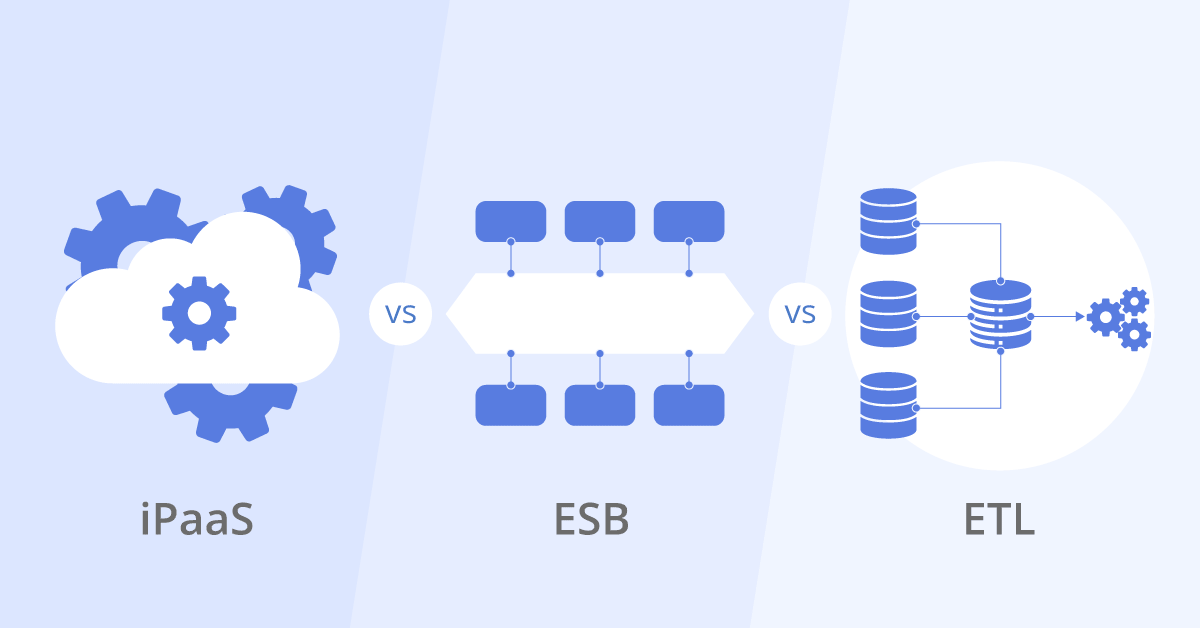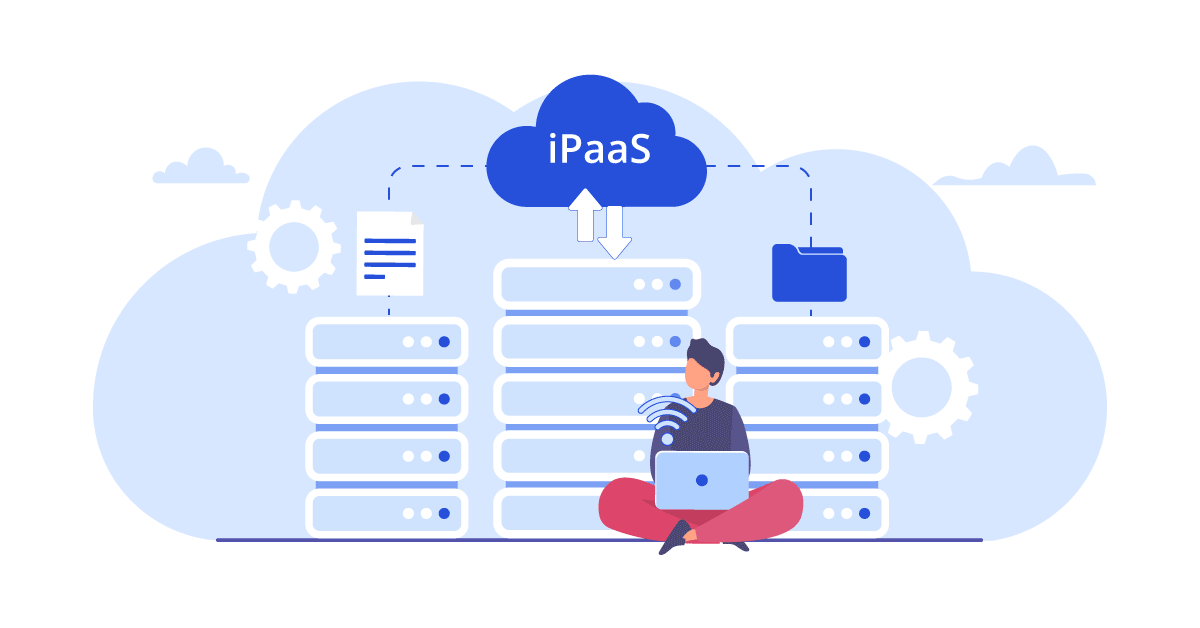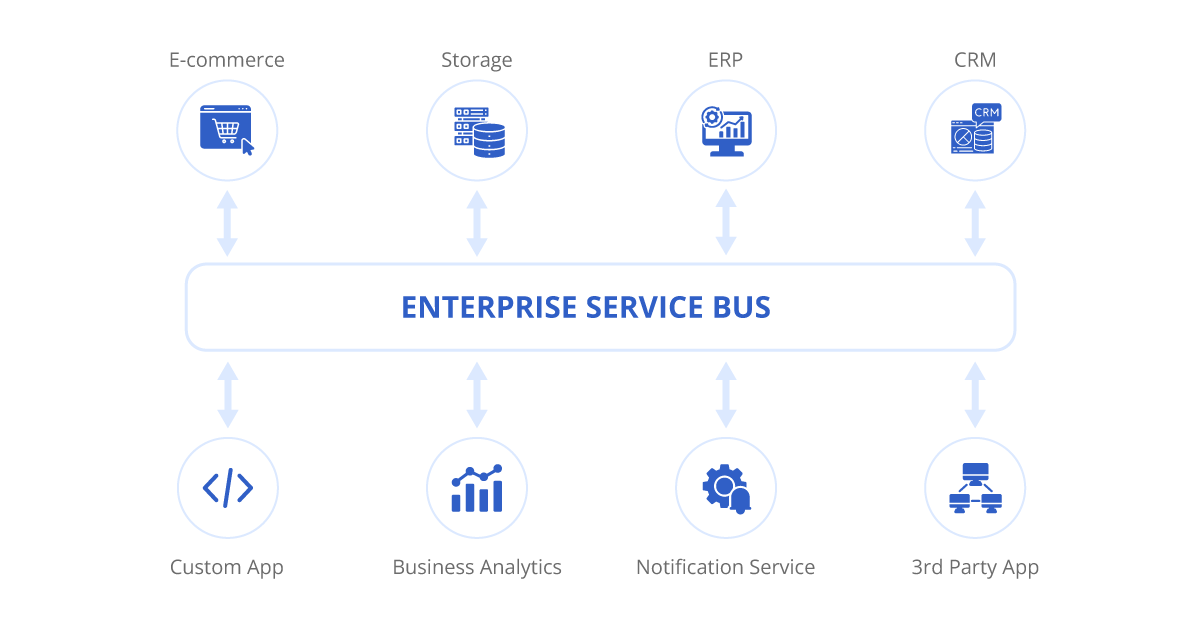The rapid growth of applications and data in today’s organizations has created a pressing need for efficient data management and cloud integration. With a plethora of data management solutions available, it can be challenging to determine which platforms are suitable for your business. In this article, we will explore the distinctions between iPaaS, ESB, and ETL solutions and examine their capabilities for cloud integration.
Aonflow iPaaS – Free for First 3 Months!
Build and run up to 1,500 transactions monthly with no cost. No payment info needed!
The Rise of iPaaS and ESB in the Integration Landscape
The increasing app ecosystem and integration demands
The modern business environment is characterized by a wide array of applications and systems, each serving a specific purpose. However, these applications often need to work together and share data to enable smooth business operations. This growing app ecosystem has fueled the demand for efficient integration solutions.
Introduction to iPaaS and ESB as integration tools
Integration Platform as a Service (iPaaS) and Enterprise Service Bus (ESB) are two popular integration tools used by organizations to connect their systems and enable data flow. iPaaS is a cloud-based integration platform that provides a comprehensive set of tools and services for connecting applications and data sources. On the other hand, ESB is an architectural pattern that facilitates communication and integration between different systems.
Importance of understanding the differences between iPaaS and ESB
While both iPaaS and ESB serve the purpose of integration, they have distinct characteristics and capabilities. Understanding these differences is crucial for making informed decisions about which solution best suits the needs of your organization. By understanding the unique features of iPaaS and ESB, you can choose the right tool for effective integration strategies.
Understanding iPaaS: Integration Platform as a Service
Overview of iPaaS architecture and features
iPaaS typically consists of various components and layers, including connectors, data transformation tools, workflow engines, and monitoring capabilities. These components work together to enable seamless integration between different applications and systems.
Advantages of iPaaS for cloud integration
iPaaS offers several advantages for cloud integration. It provides seamless connectivity with cloud applications and services, eliminating the need for complex configuration and manual coding. iPaaS platforms also offer scalability and flexibility, allowing organizations to adapt to changing business needs without significant infrastructure investments. Additionally, iPaaS reduces maintenance efforts by handling infrastructure management and updates, freeing up resources for other critical tasks.
Use cases and examples of iPaaS implementations
iPaaS finds applications in various scenarios. For instance, organizations can use iPaaS to integrate customer relationship management (CRM) systems with marketing automation tools to synchronize customer data and enable targeted marketing campaigns. Another use case is connecting e-commerce platforms with inventory management systems to ensure real-time inventory updates and streamlined order processing.
Comparing iPaaS and ETL Tools
Real-time data movement capabilities of iPaaS
One significant advantage of iPaaS over Extract, Transform, Load (ETL) tools is its ability to handle real-time data integration. iPaaS platforms enable organizations to connect systems and applications in real-time, ensuring that data is always up to date. This capability is particularly valuable for businesses that require immediate access to accurate information for analytics and decision-making.
Focus on the cloud, on-premise, and hybrid systems
ETL tools traditionally focus on batch processing and data warehousing, making them more suitable for on-premise environments. iPaaS, on the other hand, is designed with cloud-native environments in mind, offering seamless connectivity with cloud applications and services. Additionally, iPaaS platforms excel in hybrid integration scenarios, where organizations have a mix of cloud and on-premise systems that need to be connected.
Integration of systems and data with iPaaS and ETL tools
Both iPaaS and ETL tools enable organizations to integrate systems and data, but they approach it differently. iPaaS provides a unified platform for connecting various systems, transforming data, and orchestrating workflows. ETL tools, on the other hand, focus primarily on extracting data from source systems, transforming it into a suitable format, and loading it into a target destination such as a data warehouse.
Scenarios to determine the appropriate choice between iPaaS and ETL
To determine whether iPaaS or ETL is more suitable for your organization, consider the specific requirements of your integration project. If you need real-time data integration, immediate data synchronization, or connectivity with cloud applications, iPaaS is likely the better choice. On the other hand, if your focus is batch processing, data warehousing, or you have on-premise legacy systems, ETL may be more appropriate.
Introduction to ESB: Enterprise Service Bus
Explanation of ESB as an architectural pattern
Enterprise Service Bus (ESB) is an architectural pattern that facilitates communication and integration between different systems and applications. It acts as a middleware layer that connects various endpoints and enables data exchange by providing a central hub for routing and transformation.
ESB’s suitability for on-premise and legacy integrations
ESB has been widely adopted for on-premise and legacy integrations, where organizations have a complex landscape of systems and applications that need to be connected. It provides a standardized approach to integration, allowing organizations to bridge the gap between different technologies and protocols.
Challenges faced by smaller organizations in adopting ESB
While ESB offers powerful integration capabilities, it can be challenging for smaller organizations to adopt. Implementing and maintaining ESB infrastructure can require significant resources, both in terms of cost and expertise. As a result, smaller organizations may find it more practical to explore alternative integration solutions that better suit their scale and requirements.
Evolving demands data and application integration
The demands for data and application integration continue to evolve. Organizations now require seamless connectivity with cloud-based applications, real-time data flow, and support for hybrid integration models. ESB solutions are adapting to these evolving demands, incorporating cloud integration capabilities and embracing hybrid deployment models to stay relevant in the integration landscape.
The Emergence of Integration-Led Automation Platforms
Overview of integration-led automation platforms
Integration-led automation platforms are a recent development in the integration landscape. These platforms combine the capabilities of iPaaS and ETL, providing a unified solution for both real-time integration and batch processing. They streamline data management and transformation workflows, enabling organizations to automate complex integration processes.
How an integration-led automation platform combines iPaaS and ETL capabilities
Integration-led automation platforms leverage the strengths of both iPaaS and ETL tools. They offer seamless connectivity and real-time data integration capabilities provided by iPaaS, along with the batch processing and data transformation capabilities of ETL. By combining these functionalities, integration-led automation platforms provide organizations with a comprehensive solution for their integration needs.
Benefits of using an integration-led automation platform
Using an integration-led automation platform brings several benefits. Organizations can achieve increased efficiency and productivity in their data integration processes by automating repetitive tasks and workflows. These platforms also simplify management and monitoring, providing a unified interface to configure and track integration workflows.
Differentiating ESB and iPaaS Deployment: On-Premise vs. Cloud
Deployment options for ESB and iPaaS
ESB solutions have traditionally been deployed in on-premise environments due to the need for infrastructure and control over the integration process. iPaaS, on the other hand, has evolved as a cloud-based solution, leveraging the scalability, flexibility, and cost-effectiveness offered by cloud computing.
Evolution of iPaaS as a cloud-based solution
iPaaS has gained popularity due to its cloud-native architecture, which aligns with the increasing adoption of cloud-based applications and services. It allows organizations to leverage the benefits of the cloud, such as elasticity, scalability, and reduced maintenance efforts. iPaaS platforms also offer a more agile and rapid deployment process compared to on-premise solutions.
Considerations for choosing between on-premise and cloud deployments
When choosing between on-premise and cloud deployments, organizations need to consider factors such as data security requirements, existing infrastructure, scalability needs, and budgetary constraints. While on-premise deployments provide more control over data and integration processes, cloud deployments offer flexibility, scalability, and reduced infrastructure maintenance.
Aonflow is the leading integration platform.
You can kick-start by integrating your first-ever workflow in just a matter of minutes.
Integration: Vertical vs. Horizontal
Vertical integration capabilities of ESB
ESB excels in vertical integration, which involves connecting systems and applications within a specific domain or business unit. It enables seamless communication and data exchange between vertically aligned systems, allowing organizations to streamline processes and improve efficiency within specific business functions.
Horizontal integration focus of iPaaS
In contrast, iPaaS focuses on horizontal integration, which involves connecting systems and applications across different business functions or departments. iPaaS enables organizations to integrate data and processes horizontally, facilitating end-to-end workflows and enabling collaboration across the organization.
Advancements in hybrid integration for both ESB and iPaaS
Both ESB and iPaaS have made advancements in hybrid integration, recognizing the need to connect systems across various domains and departments. Hybrid integration combines the strengths of vertical and horizontal integration, enabling organizations to establish seamless data flow and communication across their entire ecosystem.
User Base: IT vs. Non-IT
ESB’s typical user base in the IT department
ESB solutions have traditionally been the domain of IT departments. They require specialized technical skills to set up, configure, and maintain the infrastructure. IT professionals with expertise in integration and middleware play a crucial role in implementing and managing ESB solutions.
Increasing adoption of iPaaS by non-technical business personnel
One of the significant trends in the integration landscape is the increasing adoption of iPaaS by non-technical business personnel. iPaaS platforms offer user-friendly interfaces, drag-and-drop functionality, and pre-built connectors that enable business users to create integrations without extensive technical knowledge. This democratization of integration empowers business users to drive their integration initiatives.
Multi-tenancy and ad hoc integration in iPaaS
iPaaS platforms often support multi-tenancy, allowing multiple organizations or departments to share the same infrastructure while maintaining data segregation and security. This capability enables organizations to adopt iPaaS as a centralized integration platform, facilitating ad hoc integration and collaboration between different business units or even external partners.
ESB vs. iPaaS vs. ETL: Final Analysis
ESB, iPaaS, and ETL each play a distinct role in data management strategies, and their functionalities are not mutually exclusive. ESB excels in connecting systems within a specific domain or business unit, making it suitable for on-premise and legacy integrations. iPaaS, on the other hand, focuses on cloud-native integration, providing real-time data movement capabilities and seamless connectivity with cloud applications. ETL specializes in batch processing and data transformation, making it ideal for data warehousing and analytics.
Suitability of ESB for on-premise and legacy systems
ESB remains a valuable solution for organizations with extensive on-premise systems and legacy applications. It offers robust integration capabilities, enabling seamless communication between disparate systems and facilitating data exchange within specific business functions. ESB’s mature technology and ability to handle complex integrations make it well-suited for on-premise and legacy environments.
iPaaS for real-time analytics and cloud-native applications
iPaaS has gained significant traction due to its cloud-native architecture and real-time data integration capabilities. It excels in handling cloud-native applications, providing seamless connectivity with various cloud services and applications. iPaaS is well-suited for real-time analytics, enabling organizations to leverage up-to-date data for actionable insights. Its scalability, flexibility, and lower infrastructure costs make it an attractive option for organizations embracing the cloud.
ETL’s role in batch processing and data transformation
ETL remains essential for organizations that rely on batch processing and require extensive data transformations. It is well-suited for data warehousing and analytics projects where data needs to be extracted from various sources, transformed to fit specific formats, and loaded into a target system. ETL tools offer robust data manipulation capabilities and are optimized for large-scale data processing.
Advantages of iPaaS over ETL for cloud integration
When it comes to cloud integration, iPaaS has distinct advantages over traditional ETL. iPaaS enables real-time data movement and event-driven integration, ensuring that data is always up-to-date and readily available for analysis or business processes. It offers seamless connectivity with cloud applications and services, allowing organizations to leverage the full potential of their cloud ecosystems. Furthermore, iPaaS eliminates the need for maintaining on-premise infrastructure, reducing maintenance and infrastructure costs.
Considerations when choosing between ETL and iPaaS
When deciding between ETL and iPaaS, organizations should consider several factors. Data volume and velocity requirements are critical considerations. If the organization deals with large volumes of data or requires real-time data integration, iPaaS may be the better choice. Additionally, organizations with cloud adoption or multi-cloud strategies may find iPaaS more suitable due to its cloud-native architecture. Scalability and flexibility for future growth should also be considered, as iPaaS offers greater scalability and agility compared to traditional ETL.
Synergistic use of ETL and iPaaS
While ETL and iPaaS have distinct roles, there are scenarios where their functionalities can be combined synergistically. Organizations can leverage ETL for batch processing, data transformations, and data warehousing while utilizing iPaaS for real-time data integration, cloud connectivity, and event-driven workflows. Integrating ETL and iPaaS platforms allows organizations to create a hybrid integration environment that meets their specific needs and ensures seamless data flow across systems.
Final Thoughts
ESB, iPaaS, and ETL are essential tools in the integration landscape, each serving distinct purposes. ESB excels in on-premise and legacy integrations, iPaaS provides real-time data integration and cloud-native capabilities, while ETL specializes in batch processing and data transformation. Understanding the strengths and limitations of each tool is crucial for organizations to make informed decisions about their data management strategies. Ultimately, the choice between ESB, iPaaS, or ETL depends on factors such as integration requirements, data volume and velocity, cloud adoption, and scalability needs. Embracing these integration technologies will empower organizations to achieve seamless data flow, improve operational efficiency, and unlock the full potential of their data in today’s interconnected world.
Aonflow iPaaS – Free for First 3 Months!
Build and run up to 1,500 transactions monthly with no cost. No payment info needed!


